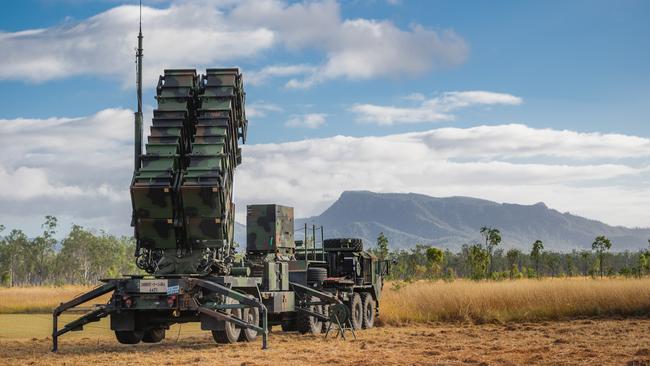Can the ADF fight hemispheric war?
The government’s decision to accelerate the creation of a $1bn Sovereign Guided Weapons Enterprise is a timely step in the face of a more adverse strategic outlook.

The decision by the Morrison government in 2021 to accelerate the creation of a $1bn Sovereign Guided Weapons Enterprise, building on the initial announcement in the 2020 Force Structure Plan, is a timely and appropriate step in the face of a more adverse strategic outlook, as noted in the 2020 Defence Strategic Update.
The update made clear that the risk of a major-power war is less remote than previously, with strategic competition between the US and China driving regional strategic dynamics, and that traditional assumptions of 10 years’ warning time for such a conflict is no longer an appropriate basis for defence planning.
Australia now faces the prospect of a very different and far more destructive war, which could potentially be protracted over a period of many months or longer.
Although we’ll operate as part of a US-led coalition, we will be confronting a major power adversary – China – that is very well equipped to strike directly against Australia and deny the ADF’s traditional military-technological advantages far from its shores.
The challenge facing Australia’s military is how to counter China’s long-range strike and power projection capabilities, while effectively supporting allies in forward expeditionary operations during a protracted war.

First, the ADF needs to be able to sustain high-intensity operations over a prolonged period. We cannot assume that war would be over quickly or limited to a few small-scale operations.
The sovereign production of guided weapons should therefore be matched by large-scale stockpiling of sufficient numbers of munitions to sustain high-intensity military operations against a major-power adversary over a prolonged period of many months, and potentially considerably longer.
Second, the ADF must also begin transforming itself into a true hemispheric force, that can project power rapidly at very long range and in a sustained manner, even in a highly contested operational environment.
That would demand much greater long-range strike capability for the ADF, including local production of advanced naval and air-launched missile systems in sufficient numbers for sustaining prolonged operations.
Third, rather than concentrating firepower in a few boutique but very expensive platforms, it makes more sense to emphasise distributed lethality and long-range dispersed forces.
This is not a call to cancel large projects such as the Hunter-class Future Frigate. However, it’s time navy invested in a larger number of smaller but highly capable crewed vessels such as missile-armed corvettes, supported by unmanned surface vessels, to complement planned large naval surface combatants.
The goal must be to build resilient military capability across a larger and more capable navy. A fleet that emphasises distributed lethality would be better placed to exploit the complexity of archipelagic waters to our north and the advantage of networked forces to strike at an opposing force’s naval capabilities from long range. Navy should increase the fleet size and ensure combat capability is sustainable and survivable through dispersed forces.
In particular, the introduction of greater numbers of armed autonomous platforms in the air and at sea, including unmanned, underwater vehicles such as Boeing Orca XLUUV, would give the ADF greater ability to conduct sustained hemispheric operations, independently or as part of a coalition. Sovereign production of missiles for such a larger navy means distributed lethality operations can be much more effective and sustained over a prolonged period.
Fourth, with China’s growing capability for long-range strike, much of our northern base infrastructure is highly vulnerable to attack. Meeting this challenge should firstly comprise a greater offensive strike capability based around long-range missile capabilities, once again produced locally, that can strike at distant forces with precision, as well as “soft kill” through cyber and electronic warfare, to attack the opponent’s “sensor to shooter” kill chain. Long-range defensive capabilities to counter long-range missile threats also need to be considered as well as emphasising the hardening of bases and dispersal of ground forces in the north.
Any consideration of missile defence for Australia should not presume that either sea or ground based interceptors can provide a full-proof shield against attack but can enhance base survivability through a focused missile defence system to protect critical facilities. Ballistic missile defence certainly does not currently have a high record of success, even in carefully managed tests.
Striking at the adversary’s kill chain immediately erodes the effectiveness of his long-range strike capabilities, and more broadly, anti-access and area denial, which in turn increases the survivability of ADF and coalition expeditionary forces. In a protracted hemispheric war, that then gives air and naval forces greater ability to not only defend Australia’s territory but support coalition operations throughout a conflict. In that possible future conflict, an ability to sustain operations across a wide geographical area, distant from Australia, as well as to effectively defend our home territory, are the two vital tasks for the ADF.
-
Malcolm Davis is a senior analyst in defence strategy and capability at ASPI.


